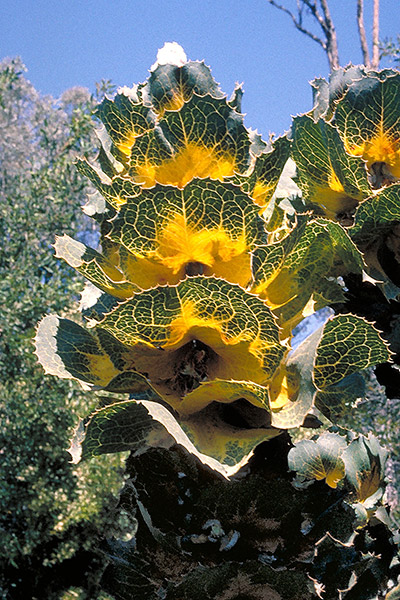General Description:
Hakea victoria is a narrow, medium shrub up to 2.5 metres high by about a 1 metre spread. The stem-clasping leaves are stiff, concave, about 200 mm x 120 mm and variegated in a range of colours – cream, yellow, orange, red. As a result of this the overall appearance of the plant is both bizarre and spectacular. The leaves have prickly teeth around the margins. The inconspicuous flowers are cream/white and occur in the leaf axils. The flowers are followed by woody seed pods about 25mm long containing two winged seeds, the usual number for all Hakea species. The pods do not shed the seed until stimulated to do so by environmental conditions (eg after a bushfire).
This species has been in cultivation for many years but is mainly suited to areas of low summer humidity. In humid areas the foliage rarely develops the intense colouration which is the main reason to grow this plant. The species is tolerant of at least moderate frosts and the flowers are attractive to honeyeating birds. The species grows best in an open, very well drained, sunny position.
Hakea victoria is easily grown from seed. Propagation from cuttings is not practical due to the habit of growth of the plant and the difficulty of obtaining suitable material.
* EPBC Act = Environment Protection and Biodiversity Conservation Act 1999;
ROTAP = Rare or Threatened Australian Plants (Briggs and Leigh, 1988)
For further information refer the Australian Plants at Risk page

Hakea victoria
Photo: Brian Walters
 Australian Native Plants Society (Australia)
Australian Native Plants Society (Australia)